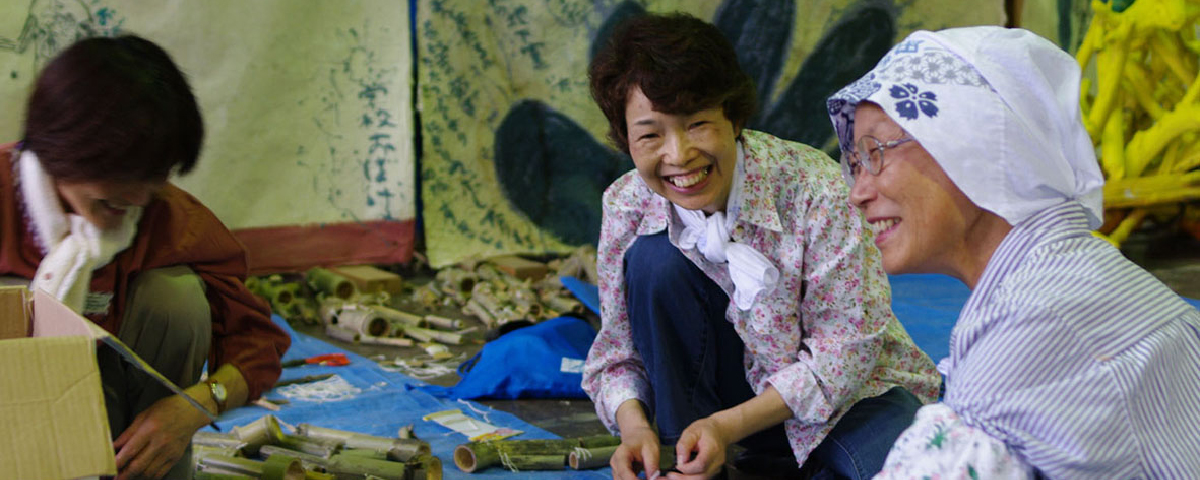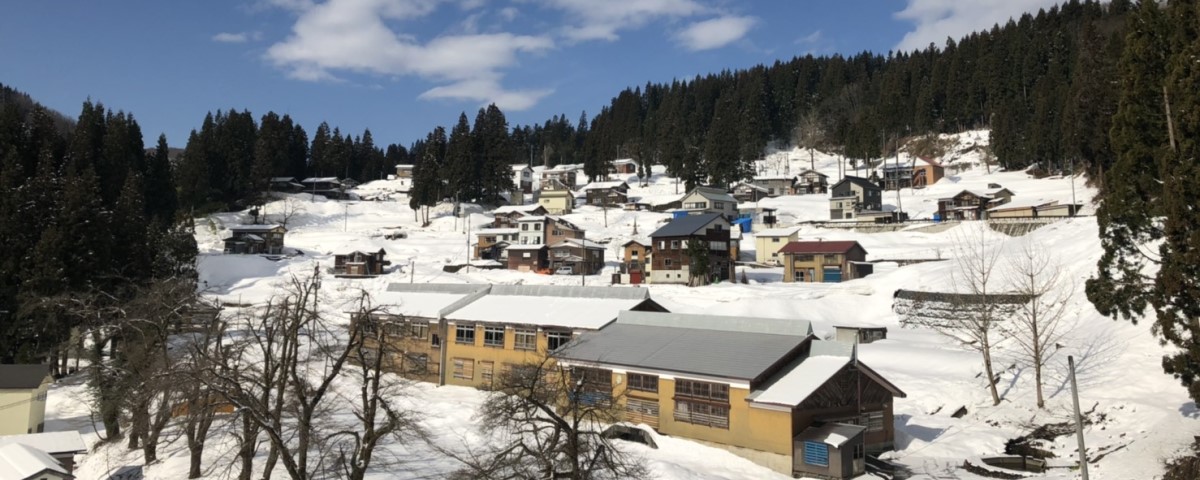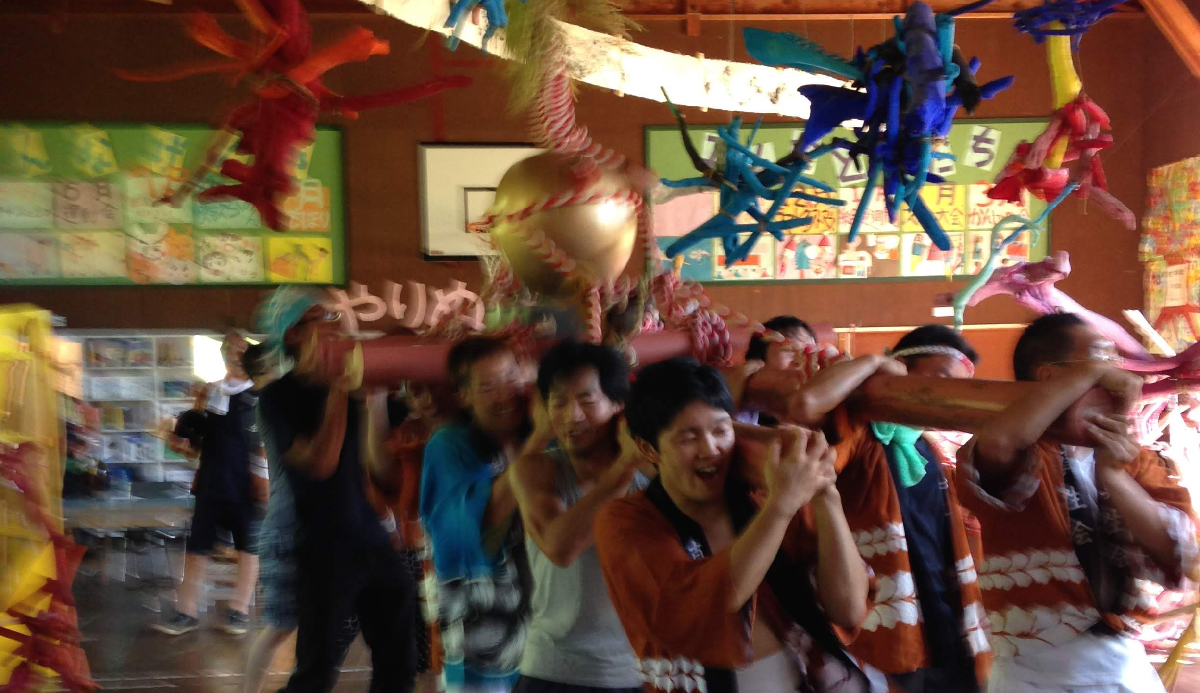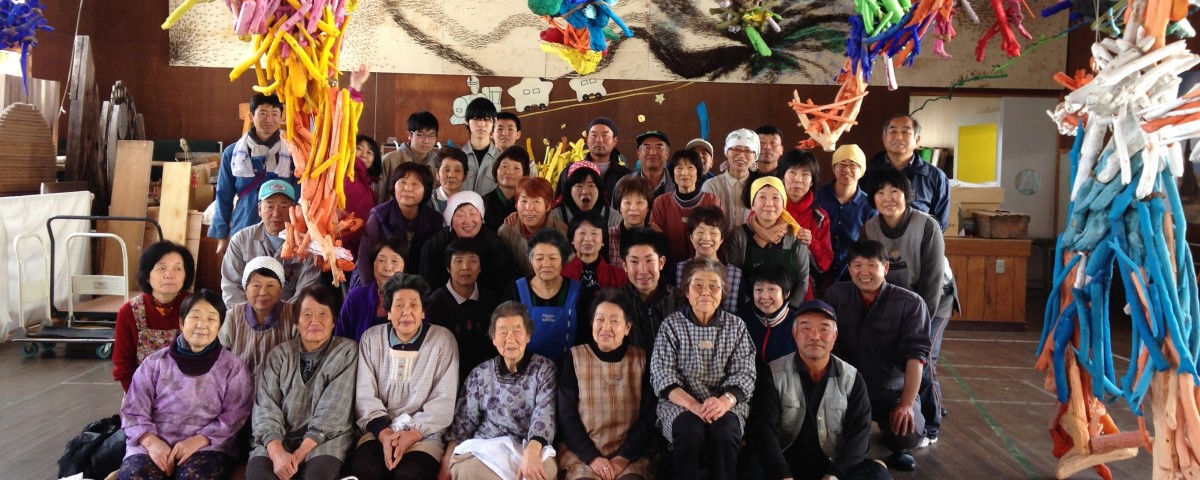美術館を支えてくれている鉢集落の人たち

雪国・十日町市の信濃川を東に望む山間に、すり鉢状の地形に囲まれた鉢(はち)集落はあります。鉢集落は、住民のほぼすべての皆さんが“尾身”という姓です。2000年の第1回「大地の芸術祭」で一番に手を挙げ、作家を受け入れた集落でもあります。外からの来訪者を暖かく迎え、いつも結束して集落の未来のために力を合わせています。
Hachi village is located in the midst of mountains which gives a landscape shaped like an inverted cone, overlooking the Shinanogawa River to east in Tokamachi-city. Most of the villagers share the same family name, Omi. It was the first village which welcomed an artist during the first iteration of ETAT in 2000. They always warmly receive visitors from outside and work together for the future of the village.





